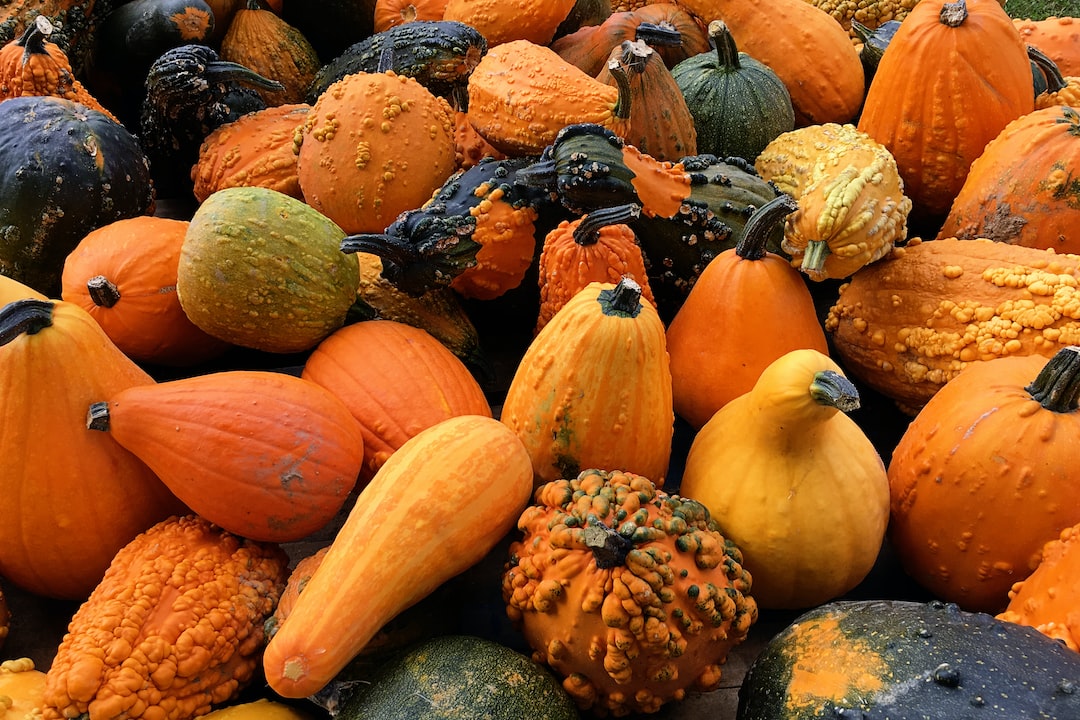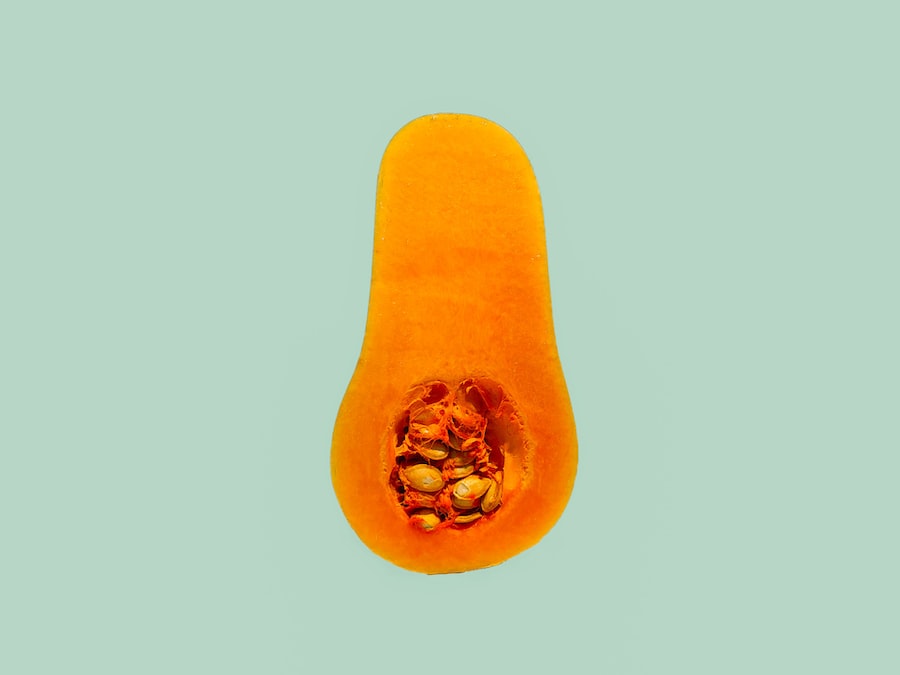5 Easy Tips to Determine When Your Spaghetti Squash is Ripe

Spaghetti squash has become increasingly popular in recent years, thanks to its versatility and health benefits. This unique vegetable is known for its stringy flesh that resembles spaghetti noodles when cooked, making it a popular alternative to traditional pasta. However, in order to fully enjoy the flavor and texture of spaghetti squash, it is important to know when it is ripe and ready to be harvested. Harvesting spaghetti squash at the right time ensures that you get the best taste and texture, making it a worthwhile endeavor for any home gardener or squash enthusiast.
Key Takeaways
- Spaghetti squash ripeness is determined by color, texture, stem, size, and senses.
- Look for a yellow or cream-colored squash with a firm texture and a dry stem.
- A small to medium-sized squash is usually ripe, while a large one may be overripe.
- Use your senses to check for ripeness by tapping, smelling, and pressing the squash.
- Harvest spaghetti squash before it becomes overripe and store it properly to prolong freshness.
Understanding the Basics of Spaghetti Squash Ripeness
Spaghetti squash ripens on the vine, just like any other fruit or vegetable. As the squash matures, it undergoes changes in color, texture, and flavor. It is important to harvest spaghetti squash at the right time to ensure that it is fully ripe and ready to be enjoyed. Harvesting too early can result in underripe squash that lacks flavor and has a firm texture. On the other hand, waiting too long to harvest can result in overripe squash that is mushy and has a bland taste.
Look for the Right Color and Texture
One of the key indicators of spaghetti squash ripeness is its color and texture. When ripe, spaghetti squash should have a vibrant yellow or golden color. The skin should be firm and smooth, without any soft spots or blemishes. The texture of ripe spaghetti squash should be firm but slightly yielding when pressed with your finger. If the skin is still green or pale yellow, the squash is likely underripe and will not have developed its full flavor. Conversely, if the skin is dull or starting to turn brown, the squash may be overripe and past its prime.
Check the Squash’s Stem for Clues
| Stem Appearance | Possible Clues |
|---|---|
| Brown and Withered | Overripe or diseased squash |
| Green and Firm | Fresh and healthy squash |
| Bent or Curved | Uneven growth or damage during development |
| Soft or Mushy | Rot or decay |
Another clue to determine if spaghetti squash is ripe is by examining its stem. The stem of a ripe spaghetti squash should be dry and brown. If the stem is still green or moist, it is an indication that the squash is not yet fully ripe. The stem should also be firmly attached to the squash and not easily detachable. If the stem easily breaks off or is already detached, it may be a sign that the squash is overripe and starting to decay.
Pay Attention to the Squash’s Size
The size of spaghetti squash can also provide clues about its ripeness. Generally, a ripe spaghetti squash will be medium to large in size. However, size alone is not a foolproof indicator of ripeness. It is important to consider other factors such as color, texture, and stem condition when determining if a squash is ripe. Small spaghetti squash may still be ripe if they exhibit the other signs of ripeness mentioned earlier. Conversely, large spaghetti squash may still be underripe if they lack the proper color and texture.
Tap into Your Senses to Determine Ripeness

In addition to visual cues, you can also use your sense of touch and smell to determine if spaghetti squash is ripe. When you gently press on a ripe spaghetti squash, it should give slightly but still feel firm. If it feels too hard or too soft, it may not be fully ripe. Ripe spaghetti squash should also have a sweet aroma when you smell the stem end. If there is no scent or if it smells unpleasant, it may indicate that the squash is not yet ripe or has started to decay.
Avoid Overripe Squash by Timing Your Harvest
Harvesting spaghetti squash at the right time is crucial to avoid ending up with overripe squash that has a mushy texture and bland taste. Overripe squash can also develop mold or decay, making them inedible. To ensure that you harvest your spaghetti squash at the peak of ripeness, it is important to pay close attention to the signs mentioned earlier. Regularly inspect your squash for changes in color, texture, stem condition, and scent. By timing your harvest correctly, you can enjoy the best flavor and texture that spaghetti squash has to offer.
Don’t be Afraid to Pick a Few Early
While it is important to wait for spaghetti squash to ripen before harvesting, there are some benefits to picking a few early. Early-harvested spaghetti squash can be enjoyed as a summer squash and has a milder flavor compared to fully ripe squash. These smaller, underripe squash can be cooked and used in recipes just like ripe spaghetti squash. They can be sautéed, roasted, or even used in salads. Picking a few early can also help thin out the plants and promote better growth for the remaining squash.
Keep an Eye Out for Signs of Decay
As with any fruit or vegetable, spaghetti squash is susceptible to decay if not properly stored or if it is overripe. Common signs of decay in spaghetti squash include soft spots, mold growth, and an unpleasant odor. To prevent decay, it is important to inspect your squash regularly and discard any that show signs of spoilage. Proper storage is also crucial in prolonging the freshness of your spaghetti squash.
Store Your Spaghetti Squash Properly to Prolong Freshness
To prolong the freshness of your spaghetti squash, it is important to store it properly. Spaghetti squash should be stored in a cool, dry place such as a pantry or cellar. Avoid storing it in the refrigerator as the cold temperature can cause the squash to deteriorate faster. It is also important to keep the squash away from direct sunlight and moisture, as these can promote decay. When stored properly, spaghetti squash can last for several weeks or even months.
Enjoy Your Perfectly Ripe Spaghetti Squash in Delicious Recipes
Once you have harvested your perfectly ripe spaghetti squash, it’s time to enjoy it in delicious recipes. Spaghetti squash can be used as a healthy substitute for pasta in a variety of dishes. It can be roasted and topped with marinara sauce and cheese for a low-carb spaghetti dinner. It can also be used in stir-fries, soups, and salads. The possibilities are endless when it comes to cooking with spaghetti squash. Experiment with different recipes and flavors to find your favorite way to enjoy this versatile vegetable.
Harvesting spaghetti squash at the right time is essential to fully enjoy its flavor and texture. By paying attention to the color, texture, stem condition, size, and scent of the squash, you can determine if it is ripe and ready to be harvested. Avoid picking squash that is underripe or overripe, as they may lack flavor or have a mushy texture. Proper storage is also important in prolonging the freshness of your spaghetti squash. With these tips in mind, you can confidently harvest and enjoy perfectly ripe spaghetti squash in your favorite recipes.
If you’re wondering how to tell if a spaghetti squash is ripe, look no further than this informative article from Lawn World. They provide helpful tips and tricks to determine the perfect ripeness of your spaghetti squash. From checking the color and texture to tapping on the squash, this article covers it all. To learn more about this topic, visit https://www.lawnworld.com/how-to-tell-if-spaghetti-squash-is-ripe.html.
FAQs
What is a spaghetti squash?
Spaghetti squash is a type of winter squash that is oblong in shape and has a yellow, hard exterior. When cooked, the flesh of the squash separates into long, thin strands that resemble spaghetti noodles.
When is spaghetti squash in season?
Spaghetti squash is typically in season from late summer through early winter, with peak availability in the fall months.
How can you tell if a spaghetti squash is ripe?
A ripe spaghetti squash will have a hard, smooth exterior with a consistent yellow color. It should feel heavy for its size and have a dry stem. You can also test for ripeness by pressing on the skin with your fingernail – if it leaves an indentation, the squash is not yet ripe.
What happens if you eat an unripe spaghetti squash?
Unripe spaghetti squash can be tough and flavorless, and may cause digestive discomfort if eaten raw or undercooked. It is best to wait until the squash is fully ripe before consuming.
How should you store spaghetti squash?
Spaghetti squash should be stored in a cool, dry place such as a pantry or cellar. It can last for several weeks if stored properly. Once cut, the squash should be wrapped tightly in plastic wrap and stored in the refrigerator for up to 5 days.



